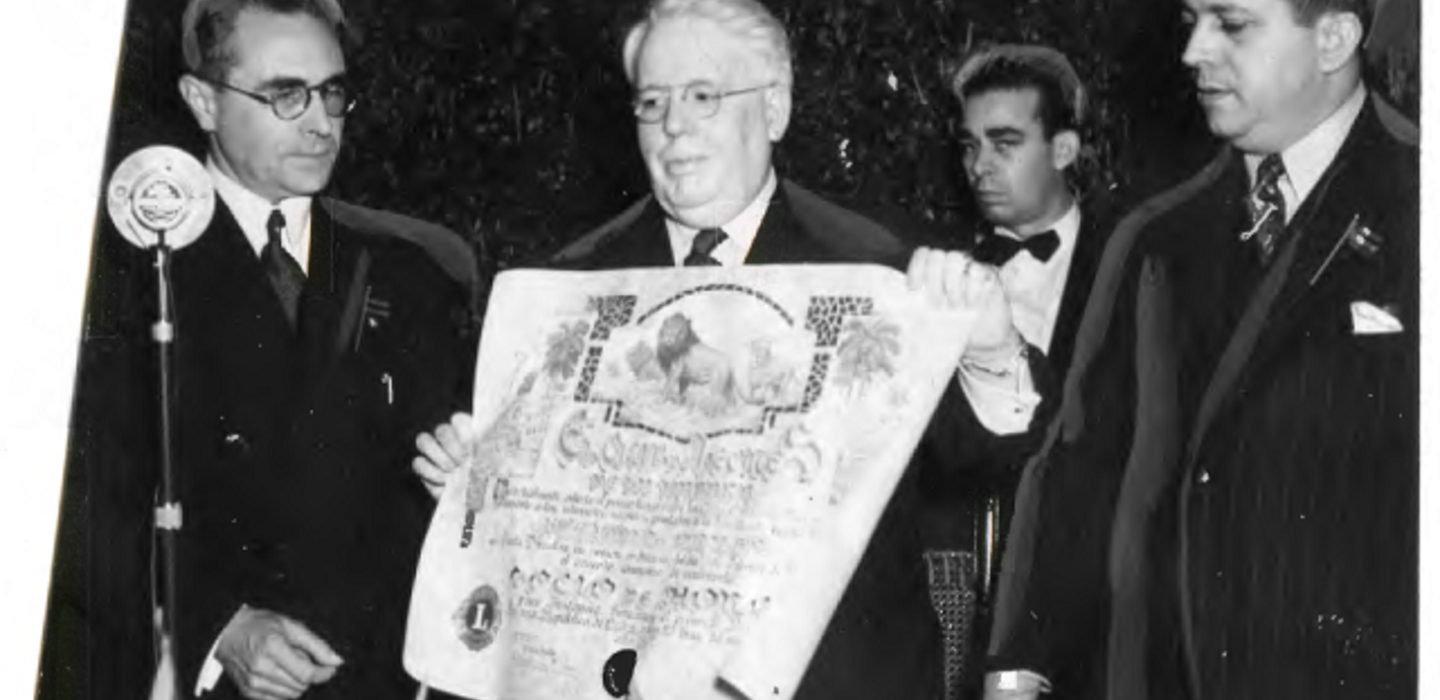Lions came to Latin America in March 1927 with the chartering of a new club in Nuevo Laredo on Mexico’s northern border with the United States. Three months later, Lions expanded to Havana, Cuba.
The next two decades saw explosive growth across the region. Lions charter dates tell the story: Panama (1935), Guatemala (1941), El Salvador, Honduras and Nicaragua (1942), Venezuela (1943), Peru (1944), Columbia (1945), Ecuador (1946), Chile and Bolivia (1948).
These early clubs were marked by large membership rolls and traditional Latin exuberance. By 1941, the Havana club ranked as the largest in the world with 900 members. And the Colon Lions Club in Panama celebrated its Charter Night with “a good orchestra, colored balloons, and assorted noise-makers,” LION Magazine reported in its October 1935 issue.
Latin American Lions soon took on leadership roles in the organization, hosting the International Convention in Mexico City in 1935 and contributing their first international president, Dr. Ramiro Collazo of Havana, in 1945. The first Spanish-language Lions magazine, Los Leones, debuted in 1935 in preparation for the convention in Mexico City. Its successor, El Leon, has been publishing since 1944 and now reaches more than 47,000 readers in Latin America.
By the early 1950s, Lions were serving all across South America with expansion to Uruguay (1951), Brazil and Paraguay (1952), and Argentina (1954). The island nations of the Caribbean, including those that gained independence in the 1960s, were next in line to welcome Lions led by Barbados (1961), Trinidad and Tobago (1962), the Dominican Republic and St. Vincent (1964), and Jamaica and Grenada (1965).
Lions’ work in Latin America and the Caribbean is as diverse as the region’s peoples and cultures. And their work has had a profound and lasting impact. In Mexico, for example, Lions have built and equipped hundreds of schools since the 1940s. Lions have also answered the call when disasters strike, most recently playing a significant role in providing aid to victims of the massive 2010 earthquakes in Haiti and Chile.
But the most spectacular Lions achievement of recent decades may be the near-complete elimination of onchocerciasis, also known as river blindness, from the Americas. Transmitted by biting flies near warm-water rivers, the parasitic disease had been endemic in parts of Brazil, Colombia, Ecuador, Guatemala, Mexico and Venezuela, putting more than 600,000 people at risk.
Working with the Carter Center and other project partners since 1999, Lions Clubs International Foundation has contributed US$6.3 million to fight river blindness in Latin America with local Lions providing logistical support and community outreach.
With the Lions’ help, in 2013, Colombia became the first country in the world to eradicate river blindness, according to the World Health Organization. Ecuador was declared free of the disease in 2014. Mexico and Guatemala have broken the cycle of infection as well, and as of 2015, were close to verifiable eradication. The disease persists in isolated places in Brazil and Venezuela, but hopefully not for long, thanks to the dedicated Lions of Latin America.
Explore the exciting history of Lions Clubs International with our exclusive Touchstone Stories series. Don't forget to share these stories with new members so they gain an understanding of Lions history?

